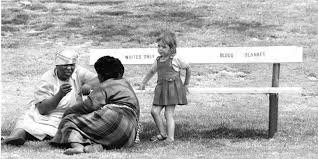How did a policy as inhumane and divisive as apartheid come into existence? What were the societal factors that paved the way for one of the darkest periods in South Africa’s history? Was apartheid an abrupt shift, or were there underlying currents that led to this systemic racial segregation? These pressing questions prompt an exploration into the historical trajectory that culminated in apartheid. This article delves into the lesser-known period of segregation that laid the groundwork for apartheid, unraveling the complex interplay of political, social, and economic factors. We will unearth the history, examine the policies, and highlight specific examples that connect the dots between segregation and apartheid.
How Did Segregation Lay the Foundation for Apartheid?
Segregation laid the foundation for apartheid in South Africa because of several interconnected factors:
- Institutionalizing Racial Separation: Laws like the 1913 Natives’ Land Act confined black land ownership to specific areas, creating physical and economic divisions between racial groups.
- Creating Economic Dependence: Systems like migrant labor forced black South Africans into economically disadvantaged positions, perpetuating racial inequality.
- Political Marginalization: Acts such as the 1936 Representation of Natives Act diminished the political voice of black South Africans, undermining their political power.
- Cultural and Social Isolation: The segregation era promoted cultural and social isolation between racial groups, shaping attitudes and perceptions that later became entrenched in apartheid policies.
These factors collectively formed a societal structure that was receptive to the more rigid and systemic racial segregation policies of apartheid. The apartheid era built upon these divisions, making them more pronounced and unyielding.
The Era of Segregation (1910-1948)
Institutionalizing Racial Separation
The era of segregation that preceded apartheid in South Africa was marked by policies aimed at institutionalizing racial separation.
- Example: The 1913 Natives’ Land Act restricted black land ownership to only certain areas, limiting economic opportunities and reinforcing racial divisions.
- Example: The 1936 Representation of Natives Act removed black voters from the common voters’ roll, diminishing their political voice.
Creating Economic Dependence
The economic structures during the segregation era created a dependence of black South Africans on white-controlled sectors, reinforcing racial hierarchies.
- Example: The system of migrant labor, where black South Africans were forced to work in mines and farms controlled by whites, perpetuated economic inequality.
The Transition to Apartheid (1948)
Implementation of Apartheid Policies
The National Party’s victory in 1948 marked the official beginning of apartheid, building on the segregation policies already in place.
- Example: The Population Registration Act of 1950 classified South Africans into racial categories, formalizing the division that had been growing during the segregation era.
Enforcing Racial Hierarchies
Apartheid took the existing racial hierarchies and solidified them through a comprehensive set of laws and regulations.
- Example: The Group Areas Act of 1950 determined where people could live based on race, leading to forced removals and reinforcing the spatial segregation initiated during the segregation period.
Conclusion
The transition from segregation to apartheid was not an abrupt change but a culmination of years of racially divisive policies and societal structures. The segregation era laid the foundation for apartheid through the institutionalization of racial separation, economic dependence, and the gradual erosion of political rights for non-white South Africans. Specific laws and practices during segregation provided the blueprint for the more rigid and inhumane system of apartheid. By tracing the connection between segregation and apartheid, we gain a deeper understanding of the historical context and the social dynamics that shaped this painful chapter in South Africa’s history. The echoes of segregation and apartheid continue to resonate, reminding us of the importance of vigilance against racial injustice and the need for continuous efforts towards reconciliation and equality.





